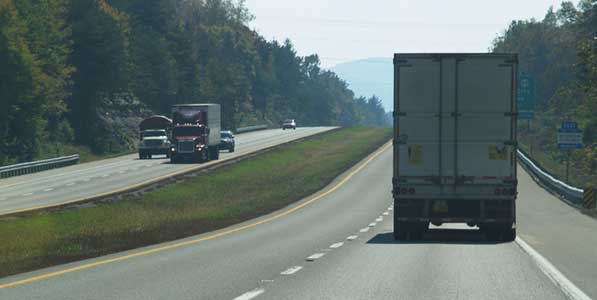Time and miles: Both seem to roll by more quickly than we realize. Consider six months, 1,800 operating hours, or 50,000 miles – for many working trucks and truck drivers, those aren’t long intervals: But they’re key markers for a piece of basic wheel-end preventive maintenance that’s too often overlooked.
This installment of the Bendix Tech Tips series reviews greasing automatic slack adjusters (ASAs), the importance of keeping up with their regular lubrication schedule, and other related wheel-end practices to enhance uptime and safety.
Dual-Purpose PM
“There are two vital purposes to greasing an automatic slack adjuster,” said Keith McComsey, director of marketing and customer solutions, wheel-end. “First, it protects the adjuster’s internal gear sets, clutches, and other components from premature wear. Second, the action of forcing new lubricant into the ASA purges the old grease, along with any contaminants or water that have found their way in. Both support vehicle safety by maintaining the correct brake stroke and providing optimal stopping performance.”
It’s not uncommon for Bendix technicians to encounter automatic slack adjusters that haven’t been greased regularly. Neglecting this simple bit of maintenance leads to the grease inside an ASA becoming clay-like as it accumulates contaminants and loses its ability to lubricate the slack. In addition to impeding performance, by impacting the brake stroke, this condition can put a vehicle out of compliance with stroke regulations. Fortunately, it’s easily avoidable.
The American Trucking Associations’ Technology & Maintenance Council’s (TMC) recommended practice (RP) for greasing ASAs lines up with those interval numbers mentioned earlier: Every six months, 1,800 operating hours, or 50,000 miles, whichever comes first. And lubrication is a simple process that generally takes less than one minute per adjuster.
Easy as 1-2-3
Begin by locating the ASA’s grease fitting. This will vary depending on the make of the adjuster: On a Bendix Versajust, you’ll find it on the slack adjuster body (casting); on others it’s a hole in the casting. Next, attach the hose from a grease gun, and inject new grease until old grease is forced through the release opening. Follow manufacturer’s instructions on how much grease to purge from the adjuster and what lubricant to use. Seriously: That’s it.
Bendix recommends greasing with an NLGI grade-2 lubricant every 50,000 miles or six months, whichever comes first, but the results are worth simply lubricating the ASAs every time the vehicle undergoes a routine vehicle chassis lubrication. Kept in good working condition and regularly greased, today’s ASAs help brake systems perform to their engineered specifications, and help them support higher-level safety systems like stability control and collision mitigation technologies.
So what do you do with an automatic slack adjuster when a brake stroke is incorrect or out of adjustment?
Know What Not to Do
After the initial setup – or following a brake relining job – a properly installed, operating, and lubricated automatic slack adjuster should never need to be manually adjusted. While there are many factors that can cause an ASA to be out of adjustment, it’s likely that none of these will be remedied with a manual readjustment. In fact, it’s more likely to simply mask the underlying issue – which means the brake will probably go out-of-adjustment again, possibly leading to more downtime. Resist the temptation to manually adjust an ASA.
To measure the chamber stroke on a wheel-end, check the distance from the chamber mounting face to the pin with the brakes released, and again after a full brake application. The difference between the two measurements is the chamber stroke, and the maximum allowable stroke under regulatory guidelines is based on the chamber size and type. Refer to the manufacturer’s instructions and mechanism tests to determine whether the automatic slack adjuster is properly adjusting the brake. (The Bendix Versajust slack adjuster test, for instance, is described on page 6 of the product Service Data Sheet – SD-05-4630.)
Looking for the Cause
Once you’ve inspected an ASA and confirmed that it’s working properly, it’s time to examine other wheel-end components and address other situations that may lead to an overstroke/out-of-adjustment condition. Here’s a checklist:
- Check for proper lubrication of the brake camshaft and cam tube.
- Inspect the cam head and rollers for abnormal wear.
- Evaluate the brake’s friction blocks for wear level and cracks, replacing the friction if necessary.
- Inspect the camshaft bushings for wear by checking radial and axial endplay, following the brake manufacturer’s guidelines. If necessary, replace the bushings.
- Check the brake drums for maximum diameter and surface finish, and replace if necessary.
- Check the brake shoe return springs to ensure a proper return to the “zero stroke” position.
- Inspect the return spring on the air chamber or on the service side of double diaphragm spring brakes.
- Inspect the clevis pins connecting the chamber to the automatic slack adjuster to ensure they turn freely, and coat with an anti-seize lubricant.
“After you’ve run through that list, verify the slack adjuster’s performance by following the manufacturer’s instructions on conducting a functional check,” McComsey said. “If the slack adjuster is still not functioning according to the manufacturer’s recommendations, replace it according to TMC recommended practices to ensure safe and effective brake operation.”














